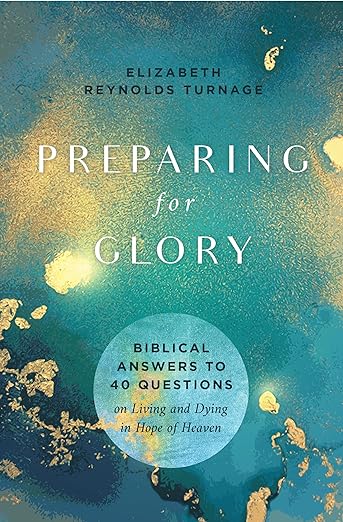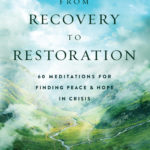by Elizabeth | Oct 14, 2011 | Learning Story

Every child is asking, "Can I get my own way?"
“All have sinned and fall short of the glory of God.” Romans 3:23
It is not considered terribly tasteful these days to say our children are born sinners. Humanism, the permeating religion of our culture, says people are basically good with occasional bad moments. This isn’t the place to argue that, but instead to note that our family story is rooted in the Christian metanarrative that includes the Fall. And besides, never has the reality of sin been more obvious to me in my own life in my interactions with my children.
How can being aware that our children, and we, are sinners, help us with parenting? So many ways, but here are a few that come to mind:
First, when our three-year-old lies to us, we aren’t stricken with horror that our child is a monster as we would be if we bought the humanistic belief that our children are basically good. No, it really shouldn’t surprise us at all that our children lie to cover up when we recognize that we are children of Adam and Eve who bought the lie of Satan that God was holding out on them and then proceeded to try to cover themselves up with FIG leaves (ever seen a fig leaf? It reminds you of something a three-year-old would do, doesn’t it – hold a leaf over their naked body and think they’re covered:)?)
Second, it gives us a natural way to help them understand God’s grace. Watch the way God parents his creation. First, he asks, “Where are you?” As I often teach, “where are you” is one of the most redemptive questions we can ask a wayward person. The idea is – you are hiding from that extraordinary, glorious creation I know you to be as created by God.
[DISCLAIMER: THE FOLLOWING STORY IS NOT BASED ON ANYTHING THAT EVER HAPPENED IN MY HOUSE. I’VE HEARD STORIES, THOUGH:)] For example, suppose your teenage daughter has stomped in the house, run upstairs, and slammed her door. (This does NOT only happen on TV:)!). You go to her room and gently knock. She says, “Go away. I hate you.” That response would be very confusing and perhaps ire-producing if it weren’t for the reality of sin. Because you love her and because you also know that this is NOT the way she was made to be, you enter her room anyway. And you ask some form of the question, “Where are you?” Hopefully, especially if you began asking this question when she was young, she will recognize that something is going on – perhaps she was hurt by someone at school and she’s somehow managed to blame it on you (If you had only let her go to that party, no one would have made fun of her.) You will be able to have a conversation about what’s going on accorded by gospel sanity. Perhaps she will turn from her anger and return to your welcoming embrace. On the other hand, that may take days, and in some cases, years. God pursued sinners – we should too.
There’s a third and very important point — about how recognizing our sin as parents affects our children, but we’re running out of room and time today, so stay tuned. Meanwhile, I’d love to know — how does the recognition of sin help you parent your children?
by Elizabeth | Oct 11, 2011 | Learning Story

what ways does your child add beauty to this world?
Yesterday I admitted that we don’t really have a mission statement as a family. Instead, we have a — surprise, surprise, story. It’s a story big enough to undergird all of our being and doing as a family. It’s a story that can be tailored for each individual and that works even when we don’t. It’s called the gospel, God’s Story of Grace, or redemptive history, by some.
And you may be (rightly) thinking — how does that story help me figure out how to potty-train our 3-year-old or to pay the medical bills racked up by our daughter’s unplanned-for bout with pneumonia? Good point. It’s not really a ‘how-to’ story, but it doesn’t mean it can’t help us as parents.
Let’s start with the first part of the story and maybe it will give us some ideas.
Creation:Genesis 1-2 You (child) are created in the image of God — that means you have incredible dignity and worth (so why would you want to wear that dirty diaper? (just kidding — sort of). Furthermore, you have a calling and a purpose — to steward the earth, to be fruitful and multiply — to add beauty (which means you should take the time to use the toilet:). What do I want my children to be when they grow up? Men and women who know their dignity and refuse to being defined or demeaned by anyone because they know their Creator delights in them. Women and men who labor with others to bring beauty to any spot on this earth they may stand today. People who know they have unique, extra-ordinary gifts and are called to bless this world with them because they have been blessed by God.
Now you tell me — can just that one part of the story (three more to come) help you in any way with any of your current challenges as parents?
by Elizabeth | Oct 10, 2011 | Learning Story

I always wanted our children to love all the children of the world!
What do you want for your children? (What do you want them to ‘be’ when they grow up? (Stop and think about it before reading on.)
In preparing last week’s talk, I discovered a blog on the New York Times website that stated,
“The goal of parenting is simple — to raise happy, healthy, well-adjusted kids.”
That really made me stop and think — I had just been praying protection for our daughter’s health as she studies for 9 weeks in India. Of course I want happy, healthy, well-adjusted kids.
But then I realized that with four children on any given day, one of them will be unhappy, one of them might be unhealthy, and another may feel ill-adjusted. What does “well-adjusted” mean anyway? At least for me, I can’t use that goal of parenting because I would feel like a failure everyday.
Your mission also must fit your unique family story. So what is your family like? If you have four children, it’s probably not very useful to try to do everything just the way your next-door neighbor with one child does it, even if you wish you could. A single-parent home will raise children differently than a two-parent home, needing others from the community to help more. A two-parent home where both parents work 10-hour jobs is going to look different than one where one stays home. So PLEASE, parents, can we stop comparing and contrasting ourselves favorably or unfavorably with others and join together in our God-created mission?
Here are a few other thoughts about how to create a vision statement, mission statement, and goals.
The vision statement is usually a description of what you see, so it’s stated with nouns and adjectives:
“happy, healthy, well-adjusted children” is a vision.
“wise, compassionate, kingdom servants” is another example.
What’s yours?
The mission statement tells how you will accomplish the vision. This is where your unique family story comes in.
“by educating them in the best private schools, by being involved in the local church, by teaching them Scripture, having family meals, playing sports etc etc…those are just a few of the many ways we accomplish the mission statement.
One last thought — the most important thing we must know as parents is our own mission. What do you see as your life calling and purpose? What do you value? What story forms the center of your life? How do you view yourself? How do you view God? The answers to these questions are what our children are most likely to ‘catch’ and live.
Want to do some specific work on your mission statement? Check out the Simple Mom blog that will guide you through it.
by Elizabeth | Oct 7, 2011 | Learning Story

Does your child need a big story?
We need all of the parenting tips and tricks and insights and wisdom we can get. When my babies were young, I tried all of them, especially the ones related to getting them to sleep and some of them actually worked. But one thing I didn’t spend much time on when they were young was thinking about “what I wanted them to be when they grew up.” First of all, I couldn’t see far enough into the future to think they would grow up. Secondly, all I cared about was that my almost-three-year-old would be potty trained in time to go to preschool in the fall. (Okay, I cared about more than that – I also wanted him to quit hitting his sister.) The point is, at all stages of parenting, it’s easy to get lost in the nitty-gritty of the daily ins and outs and forget the big picture. Parenting Your Child’s Story is about taking some time to think and pray about that big picture.
The first thing to ask ourselves is, “Is there a bigger story than my child or my family?” I often struggle to see the forest for the trees – that is, I am so busy attending to the make-it-or-break-it moments of parenting (keeping my child from throwing a tantrum in the grocery store; not making a scene when I say good-bye to them at college). In what I have always called, “the ongoing pursuit of the ever-elusive-mother-of-the-year award,” I often forget the big picture. I have learned the hard way — when my child or my parenting becomes the center of the story, I’m in trouble. I begin to give extra pieces of candy (or extra time added to curfew – the stakes always increase) for the simple reason that I want to be liked. Or I create limitations to “protect” them because I really don’t want to deal with the stomach turbulence I will experience if my 5-year-old goes to the beach with a friend, or my 20-year-old travels to India to study abroad. There must be a story bigger than us.
And I just realized this is going to be more than one blog. Stay tuned for more on that bigger story next week. Meanwhile, what about you? What do you want your children to be like — next year or in 20 years? What daily struggles cause you to forget the big picture? How do you think having a big story for them might help you in the daily struggles? (No, these aren’t rhetorical questions:) I’d love comments.)
by Elizabeth | Oct 4, 2011 | Learning Story, Writing
One of my favorite parts about the Living Story Bible study series is the story feast; one of my biggest concerns about story feast is that people will skip it because they think it is somehow unimportant or not a ‘real’ study week since we don’t have a passage of Scripture to engage. It is true, story feasting is not work — it’s play. It’s God’s play. It’s a set-aside time — a ritual — to remember the goodness of what he’s done.
Story Feasts are what people have done for centuries — gathering together in community over good food to tell good stories. But they are different — because few of us take the time anymore to feast intentionally. Listen to what Dan Allender says, and try it yourself. For more on story feasting, check out Learning God’s Story of Grace.
Stories are food for friends to feast on together. We are called to write, and then rewrite. But we also are called to tell our stories to people who love us, people who will celebrate our lives. We need people who will ponder our stories and help us write with more integrity and depth, but we need more than feedback; we need celebration.
I need my friends to laugh and also to weep with me. I will never write the stories that reveal my name, let alone transform my name, unless I am in a community that loves, celebrates, and feasts in the midst of our shared stories.” Dan Allender, To Be Told
by Elizabeth | Oct 3, 2011 | Learning Story
 Author Mark Helprin writes a story about a man who experiences worship of the Creator anew as he partakes in a spectacular renovation. In the story, “Monday,” a contractor accepts the job of restoring an old New York City apartment for the widow of a man killed in the South Tower on September 11, 2001. Without her knowledge, the contractor decides to do the work for free, and a remarkable work of art is created as his laborers join with him in this self-sacrificial gift. Helprin describes the restoration project:
Author Mark Helprin writes a story about a man who experiences worship of the Creator anew as he partakes in a spectacular renovation. In the story, “Monday,” a contractor accepts the job of restoring an old New York City apartment for the widow of a man killed in the South Tower on September 11, 2001. Without her knowledge, the contractor decides to do the work for free, and a remarkable work of art is created as his laborers join with him in this self-sacrificial gift. Helprin describes the restoration project:
“The work itself became the object and never in their lives had they done better. Never had the walls been straighter or smoother, never had the plaster been whiter, never had the wood been closer joined, never had the joints been tighter, the colors more intense, the proportions more artful….when they fitted it all in…the men kept on saying, “Look at that! Look at that!” because nowhere in New York or perhaps anywhere was there a better job….This was repeated in the rosewood paneling, in limestone baseboards, in nickel, marble, granite, and unobtrusive plaster molding that physics said could not be whiter, purer, or more like snow in bright sun. It was apparent in the ironwork, brasswork, and glazing. The solid walnut doors were two and a half inches thick, with the same brass hardware and hinges as in the White House, and they closed more smoothly and quietly than the doors of a Rolls-Royce. (Mark Helprin, “Monday,” in The Pacific and Other Stories, 2004).
The contractor, as he watches this marvelous transformation, understands worship in a way that he never had as he attended Mass:
The mass existed, in his perhaps heretical view, to keep, encourage, and sustain a sense of holiness, and to hold open the channels to grace that, with age and discouragement, tend to close. Witness to those who had little sacrificing what they had, to their children contributing to the work in their way, and to the fathers’ pride in this, Fitch felt the divine presence as he had not since the height of his youth. (Helprin, 68)
For reflection: When has God’s creation caused you to respond with a gut-punching, breath-taking worship, the kind where you grab your friend or a stranger by the arm and say, “Look at that! Look at that!” (And remember, as this story suggests, it need not be something from the environmental world, it could be a work of art, music, sports just as easily as a sunset, a shark, or a storm)





 Author Mark Helprin writes a story about a man who experiences worship of the Creator anew as he partakes in a spectacular renovation. In the story, “Monday,” a contractor accepts the job of restoring an old New York City apartment for the widow of a man killed in the South Tower on September 11, 2001. Without her knowledge, the contractor decides to do the work for free, and a remarkable work of art is created as his laborers join with him in this self-sacrificial gift. Helprin describes the restoration project:
Author Mark Helprin writes a story about a man who experiences worship of the Creator anew as he partakes in a spectacular renovation. In the story, “Monday,” a contractor accepts the job of restoring an old New York City apartment for the widow of a man killed in the South Tower on September 11, 2001. Without her knowledge, the contractor decides to do the work for free, and a remarkable work of art is created as his laborers join with him in this self-sacrificial gift. Helprin describes the restoration project:



![When’s the last time you highlighted your weakness?
Therefore I will boast all the more gladly in my weaknesses, so that the power of Christ may rest upon me. 2 Cor. 12:10
All-Powerful God,
We confess,
we in Western culture
crave power, control, and independence.
The last thing we want
is to seem weak.
And yet, weakness is the way of Christ,
so it must be our way as well.
The apostle Paul understood that,
so in the face of accusations
that he wasn’t an apostle,
he countered the boasting of the “super-apostles”
with some boasting of his own:
“If I must boast,
I will boast of the things
that show my weakness” (2 Cor. 11:30).
And then he mentions how he was lowered in a basket through the window of a wall in Damascus, of all places,
a place he went to persecute Jews only to be knocked down on the road,
struck blind, by his Lord and Savior himself.
Paul shares many other weaknesses in 2 Corinthians,
a book that’s all about weakness as the way
of followers of Christ.
He asked that you would relieve him from a “thorn in the flesh,”
but you did not.
Instead, you said,
“My grace is sufficient for you,
for my power is made perfect in your weakness” (2 Cor. 12:9).
Lord, we know we really are weak —
[for each of these areas, name any weaknesses you have]
weak in our bodies,
weak in our work,
weak in our wills,
weak in our faith,
weak in our hope,
weak in our love.
We believe
that you your power is made perfect
in and through our weakness.
Help our unbelief.
In Jesus’s name. Amen.
Read 2 Corinthians 11:30-12:10.
#Dailyprayer #devotional
#hopewriterlife #goodnewsfeed #votd #Biblestudy #dailydevotions #grace #dailyverse #womensministry #aging
#gospelshaped #shereadstruth #womenoftheword #christianliving](https://www.elizabethturnage.com/wp-content/plugins/instagram-feed/img/placeholder.png)